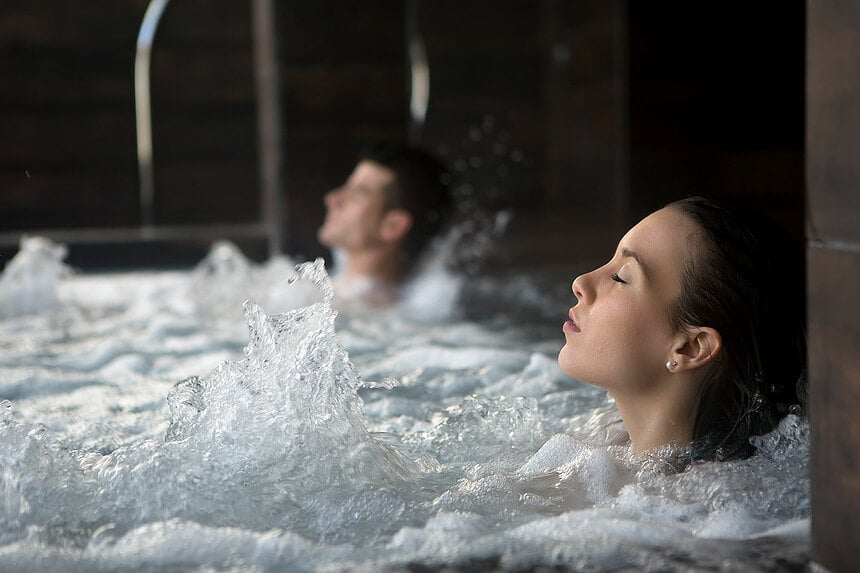The global medical spa market was valued at an estimated US$14.4 Billion in the year 2022 and is projected to reach a revised size of US$45 Billion by 2030, which implies a growth rate (CAGR) of 15.3% over the analysis period 2022-2030. These figures were estimated based on the research in a report published on ResearchAndMarkets.com, titled, Medical Spa - Global Market Trajectory & Analytics.
What is a MedSpa?
Medical Spa, also referred to as MedSpa, combine medicine and aesthetics to provide high-tech cosmetic treatments in a spa setting. Botox injections, fine-line reduction, acne therapy, liposuction, hair regeneration, and hair removal are some of the various treatments included in medical spas.
Aesthetic medicine and cosmetic treatments for beauty enhancement and the growing wellness trend in developed countries are driving this market. However, the high cost of medical spa procedures is restricting market growth, especially in developing countries.
The medical aspect of the MedSpa is overseen by a dedicated and highly skilled physician who is always present on the premises, ensuring the highest level of care and expertise.
Medical spa market
Despite the challenges posed by the COVID-19 pandemic, the global market for Medical Spa is expected to thrive in the coming years. From its estimated value of US$14.4 Billion in 2022, the market is projected to reach a revised size of US$25.9 Billion by 2026, reflecting a remarkable CAGR of 13.5% over the analysis period. This growth is a testament to the resilience and adaptability of the medical spa industry, as it continues to meet the evolving needs and demands of consumers worldwide.
MedSpa growth & profitability
With the fusion of spa treatments and medical procedures, medical spas offer an extensive array of services, making them highly sought after by individuals who have both the disposable income and desire for beauty and wellness. Their remarkable success has sparked widespread interest, prompting large corporations, prominent hospital chains, and leading pharmaceutical companies to invest in various medical spas.
Technological advancements have been a game-changer for the MedSpa industry, revolutionizing the availability and affordability of treatments. The rise of digital technology has been instrumental in driving the growth of medical spas, and this trend is expected to continue in the future. With the help of technology, people can now achieve a younger and more rejuvenated appearance without having to undergo invasive and painful procedures.
Despite the economic challenges experienced globally in recent years, there is a positive shift in the economic outlook, with growth recovery anticipated for this year and the next. While corporate investments in the MedSpa industry, like in most sectors, may face some hindrances due to concerns over inflation and weaker demand, the emergence of new technologies will partially reverse this prevailing sentiment toward investment.
As we move into the future, the advancements in technology have the power to drive significant growth and value to the global GDP. However, the short-term outlook presents a mix of challenges and opportunities for both consumers and investors. In this dynamic landscape, businesses and their leaders who possess resilience and adaptability will find endless opportunities to pave the way forward.
Largest MedSpa chains
Key players operating in the global medical spa market include: Allure Medspa, Biovital Medspa, Canyon Ranch, Chiva Som, Clinique La Prairie, Hyatt, Sciton, True Skin Care Center, Vilalara Longevity Thalassa & Medical Spa, Spa Vitoria (plastic surgery); Lanserhof; and Westchase Medspa. Other players operating in the supply chain include: Cynosure (energy-based aesthetic and medical treatment systems); Lumenis (medical equipment & laser devices manufacturer); and Syneron Medical (cosmetic surgery devices).
Key trends in the medical spa industry
- The facial treatment segment accounted for a one-third share of the global market revenue in 2020 and is set to have the largest growth rate of all the segments due to its rising popularity among both sexes;
- The body shaping segment accounted for one-fifth of market revenue. This segment has been boosted by recent advances in body shaping, which include various non-invasive techniques that enable less hospitalisation and faster recovery. Thus, such advances in the body shaping segment should continue to drive growth in this segment;
- The hair removal segment is expected to reach $3.8 Billion by 2026. Growth in this segment can be attributed to innovations in laser technology, which render permanent hair removal feasible;
- The global tattoo removal market size was $4.34 billion in 2021. It is estimated to reach $12.15 billion by 2030, representing a CAGR of 12.1% throughout the forecasted period of 2021-2030.
- India is the fastest-growing country in the Asia-Pacific medical spa market, projected to grow at a CAGR of 14.2% over the period 2018 to 2025;
- China, the world's second-largest economy, is forecast to reach a projected market size of US$7.7 Billion by the year 2030 at an astounding CAGR of 20.6%;
- Brazil is the fastest-growing country in the LAMEA (Latin America, Middle East and Africa) medical spa market, expected to achieve a CAGR of 13.9% over the period 2018 to 2025;
- North America has been the dominant revenue contributor to date, due to the growing wellness trend and the early adoption of new technologies in this sector;
- However, Asia-Pacific is expected to achieve the highest CAGR over the period 2018 to 2025, due to rising incomes in heavily populated countries, such as India and China. In addition, medical tourism will also fuel market growth.
What treatments are leading the medical spa growth?
This section rounds up the treatments which are driving growth for the medical spa businesses so those looking to open a clinic or those with an existing venue such as a hotel or beauty salon to expand their service offering into this highly profitable market can gain inspiration on which specific treatments to focus on.
Some of the trends in this section come from the latest MedSpa report titled "Medical Spa Market Share, Size, Trends, Industry Analysis Report, By Service (Facial Treatment, Body Shaping & Contouring, Hair Removal, Scar Revision, Tattoo Removal); By Age Group; By Service Provider; By Region; Segment Forecast, 2023-2032" published by Polaris Market Research in its research repository.
Facial treatments main rriver of growth
Based on the report's findings, facial treatments emerged as the frontrunner in generating revenue for medical spas in 2022. This can be attributed to the increasing demand for anti-aging solutions like Botox and dermal fillers. As consumers become more focused on enhancing their facial features, the demand for face and neck treatments at med spas continues to rise, contributing to the overall growth of the medical spa market segment.
An interesting study called the Elite Facial Plastic Surgery study conducted in 2021 revealed that the number of annual Botox treatments skyrocketed by an impressive 459% between 2000 and 2020.
Other facial treatments which are driving growth for medical spas are eyebrow microblading (a tattooing technique in which a semi-permanent pigment is added to the skin), and non-surgical facelifts which can be done in a variety of different ways, including a "one-stitch facelift", thread lift, Ultherapy, Thermage among other procedures which all aim to lift, firm and tighten the face and neck.
Alex Thiersch, founder and director of the American MedSpa Association (AmSpa), remarks that, “I think everyone has to be surprised with the way that microblading has come on the scene: the reception, the profit and the patient demand.”
Mid-30s to 50s show their purchasing power
The adult category dominates the medical spa market share in 2022, driven by a growing interest in body contouring and anti-aging treatments among adults. This segment's growth is further supported by the fact that the majority of med spa consumers fall in the age range of mid-30s to 50s with an above average purchasing power.
Additionally, the increasing desire for facial treatments influenced by the impact of social media, is expected to contribute to the segment's expansion. The demand for dermal fillers among adults aged 35 to 50, is also fueling the growth of the adult segment.
Male clientele not growing as fast as predicted
On the other hand, there has been a surprising lack of growth in male clients. The majority of patients who visit medical spas are women, accounting for 88% of the total number of patients. This trend has remained steady, with female patients making up 87% of the total number in 2019. Despite the industry's hopes for an increase in male patients, the data from 2022 does not show a substantial increase. However, the full report indicates a significant shift in the age distribution of male patients.
Injectables remain a core product
Meanwhile, Alex Thiersch of AmSpa encourages med spas to continue to focus on what brings patients though the door, namely injectables. “Botox, Dysport and fillers still dominate the industry,” he notes, adding that, “Study after study has found that these are the treatments that people are most curious about. And although it is easy for med spas to become distracted by new treatments and fancy machinery, the beating heart of the aesthetics industry is, and will continue to be, injectables,” according to Tiersch, who adds that,“Injectables are still the most reliable way to attract patients and, with developing efficiencies and increasing innovation, we are seeing practices make a lot of money from injectables.”
Longer-lasting botulinum toxin injections which help stop muscle spasms when injected directly into the muscle are also a mainstay.
The single ownership segment dominates
Good news for entrepreneurs. When it comes to service providers in the medical spa industry, the report highlights the dominance of the single ownership segment in 2022. This segment has achieved a significant market share due to several key factors. One of these factors is the increasing integration of state-of-the-art equipment in single-owned, small-sized, and single-location medical spa facilities.
Moreover, with the rising rates of burnout and decreasing reimbursement rates, more doctors are opting to become sole or joint holders of these services. This trend is further fueling the growth of the single ownership segment in the market.
Lecturer Spa Management at EHL Campus Passugg





